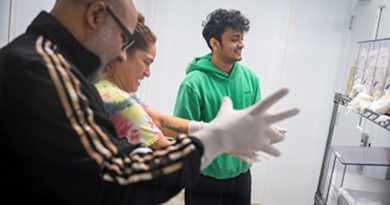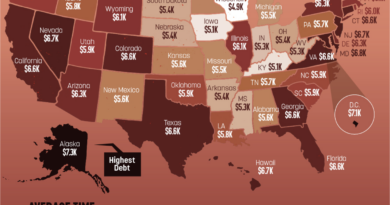Daily Business Report-Nov. 24, 2014
Rendering shows the extension of the San Diego Trolley Blue Line in University City. (Courtesy SANDAG)
Trolley’s Northern Extension
Gets Environmental Approval
Extension of the San Diego Trolley Blue Line north to UC San Diego and University City received final environmental approval Friday, paving the way to begin construction late next year.
The SANDAG board of directors voted unanimously to certify the state environmental document, and planned to move forward with final engineering work and application for federal funding, which is expected.
SANDAG, the San Diego Association of Governments, is the regional planning agency for San Diego County and its 18 cities.
“We have been working toward this milestone for many years. We look forward to securing federal funding for the project next year and starting construction on this long-awaited regional transit project,” said County Supervisor Ron Roberts, a member of the SANDAG board.
The $2 billion project would be financed half from federal funds and have from the TransNet half-cent sales tax.
“This project will not only provide additional travel choices for residents, it will also be a major boost to the regional economy,” said Santee Councilmember Jack Dale, chair of the SANDAG board. “Its construction will result in more than 14,000 local jobs, and it will provide a net economic benefit of more than $2.5 billion for the region.”
The Mid-Coast Trolley project is considered one of the region’s highest priority transit projects. It will provide a no-transfer ride from the international border and communities south of Downtown San Diego all the way to UC San Diego and University City.
— Times of San Diego
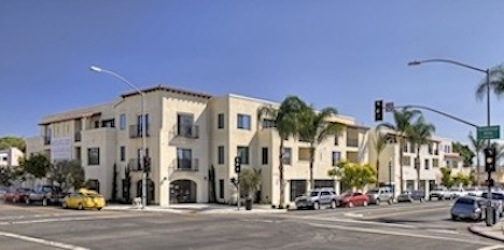
Move-Ins Under Way at
Kensington Commons
Residential move-ins are under way at Kensington Commons, a new, $10 million mixed-use apartment and retail development at Adams and Marlborough avenues in Kensington.
The three-story development features 34 apartment units and nearly 10,000 square feet of ground floor retail space on Adams Avenue. It’s on a site formerly occupied by an Emerald gas station.
Retail tenants include a Stehly Farms Market, The UPS Store, and Pacific Dental. Stehly Farms Market, a local organic grocery store, will have its grand opening in January.
A total of 65 parking spaces are “hidden” in the rear of the structure. Apartments will include one and two-bedroom flats with open floor plans, upscale amenities and generous outdoor spaces.
Kensington Commons was designed by Allard Jansen Architect in collaboration with Maple M3 Architects and architect Salomon Gorshtein.
Apartment floor plans include one- and two-bedroom units with nine-foot ceilings. The pet-friendly flats offer hardwood floors, plush carpeting, modern kitchens with stainless steel appliances and gas ranges, washer and gas dryer, quartz countertops, large storage closets, private patios or balconies and secure covered parking.
“Kensington Commons was designed to allow living, working and playing within an urban village setting,” said architect Allard Jansen. “Tenants will enjoy upscale living and convenient, walkable access to shopping and services. We brought in a local organic grocery store so people can shop locally. Because the community lacks a post office, we brought in a UPS Store.”
The Santa Barbara-style architecture reflects the prevailing style of the surrounding community, said Jansen.
Kensington Commons was developed by the Terrace Partners LP partnership of Allard Jansen, Hannah Devine, Rick Vann and Salomon Gorshtein. Jansen is familiar with the Kensington village as both a resident and the developer of several award-winning projects in the community.
Luxury Home Values Rise in San Diego

Luxury home values continued to rise in California’s largest metropolitan areas, with San Diego seeing a 4.8 percent increase in the third quarter, according to First Republic Bank. The private bank and wealth management company said San Diego, San Francisco and Los Angeles all experienced home-value increases in the third quarter of 2014 compared to a year ago, as well as growth from the second quarter:
• San Diego — 4.8 percent increase to an average value of $1.98 million.
• San Francisco — 14.3 percent increase to an average value of $3.44 million.
• Los Angeles — 13.0 percent increase to an average value of $2.61 million
“Luxury home values in San Francisco and Los Angeles were quite strong, while San Diego values continued to appreciate but at a slower rate,” said Katherine August-deWilde, president of First Republic. “Price increases continue to be driven by low interest rates, limited inventory and a good economy. Luxury properties are routinely selling for over the asking price and often with multiple offers.”
In Coronado, sales activity was at all-time highs. “Coronado is different than elsewhere in San Diego County,” said Scott Aurich of Pacific Sotheby’s International Realty in Coronado. “This year, there will be close to 300 deals on the island, the most we’ve ever had. Prices are back to the peak of 2006 and 2007. There is a real scarcity of homes on the market. Properties that are well priced get sold quickly.”
— Times of San Diego
San Diego’s Clean Tech Economy A Showcase
California’s clean technology industry is booming, according to a new report. But different regions have different strengths.
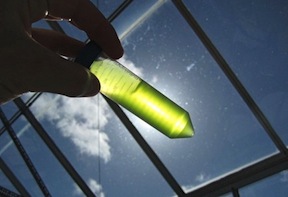
Non-partisan think tank Next 10 found San Diego’s clean tech economy is a showcase for the development of bio-renewable technologies and micro-grids, which are small, closed systems that produce and use their own power.
There are a number of things that work together to help San Diego.
“Investment dollars. Patents are a very big thing in clean technology,” Next 10 founder Noel Perry said. “And innovation due to our clean tech businesses. Our research institutions. And the policies that drive the clean tech sector.”
Other parts of California boast their own strengths. San Francisco’s clean-tech-friendly government policies were singled out. Los Angeles and Orange counties were recognized for being the fastest growing electric vehicle market in the state.
“There are many different unique assets in the clean tech markets’ different regions around California and we thought it would be important to try to capture that and show some of the similarities and differences,” Perry said.
San Diego Gas and Electric has largely converted to smart meters and the company is a driver for local micro-grids, such as one at UC San Diego.
Companies in the region that work with items like plants, algae and waste are also thriving. They have landed more than $800 million dollars in early-stage funding.
Read the full report here
— KPBS
Despite Affordable Care Act, 275,000 County
Residents Still Have No Health Insurance
The Affordable Care Act greatly reduced the number of uninsured people in San Diego County from a high of more than 500,000, but research shows that almost 275,000 residents here still have no health insurance, according to a study commissioned by the Council of Community Clinics.
The UCLA Center for Health Policy Research indicated the reasons are many. Some people are unaware that they qualify for Medi-Cal, which provides medical care at little or no cost; others assume that they simply can’t afford health insurance, even though their low income levels may qualify them for subsidies via a tax credit through Covered California; and still another group, over one-fourth of the uninsured, are undocumented individuals who are not eligible for coverage through either Covered California or full-scope Medi-Cal.
Henry Tuttle, CEO of the Council of Community Clinics, a nonprofit organization representing 16 health centers with more than 100 sites of care in San Diego, Riverside and Imperial counties, says that the information provided in this study will help his staff design outreach programs that specifically target uninsured area residents. “Not only do our health centers provide outstanding health care to the medically underserved, we work to educate individuals about their insurance options and get them linked to coverage. Many people don’t realize that affordable health insurance is available to them.”
It’s not all bad news. The study said the percentage of uninsured in San Diego County has decreased from 22 percent to 14 percent of the population. And over half — 60 percent of the population — continues to receive health benefits through their employer.
Port to Adopt Alternate Work Week Schedule
The Port of San Diego is resuming the use of an Alternative Work Week program in January that is expected to reduce energy use and improve efficiency. Under the program, the Port Administration Building and administrative offices for Harbor Police and General Services will be closed every other Friday, beginning Jan. 16.
Business hours for most port departments will remain from 8 a.m. to 5 p.m. Monday through Friday except for alternate Fridays, which will be listed on the port’s website for planning purposes. The schedule will not affect public safety employees such as Harbor Police officers and dispatchers.
Full-time employees will continue to work 80 hours every two weeks.
The Alternate Work Week is expected to have some major benefits that include supporting the port’s goals to become more environmentally friendly by reducing building energy use, reducing work commute emissions and easing rush-hour traffic congestion.
City of San Diego Gets Chief Data Officer
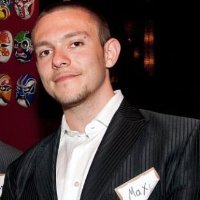
A technology expert who helped create a tool that allows businesses and residents of Puerto Rico to search for government programs for which they might be eligible has been appointed chief data officer for the city of San Diego. Maksim Pecherskiy will be responsible for the city’s open data programs.
Pecherskiy was a fellow for Code for America last year when he developed the government search product in Puerto Rico called PrimerPeso. Before that, he was a solutions architect at Promet Source, where he built large web systems and designed complex integrations. He also shaped development processes and led international development teams.
The mayor’s office has been developing an open data policy, which is scheduled to go before the City Council on Dec. 16. The policy calls for the chief data officer to identify and make the city’s high-value data sets available to the public through a web portal.
Petco to Acquire Online Pet Supply Company
San Diego-based Petco has entered into an agreement to acquire Drs. Foster and Smith, a veterinary-owned online pet supply company. The merger will unite one of the largest pet specialty retailers with one of the largest online pet retailers in the country. Financial terms were not disclosed.
Based in Rhinelander, Wis., Drs. Foster and Smith is among the nation’s foremost authorities on pet care and education, with a strong reputation for their scope of veterinary expertise on prescription medications and quality products for dogs, cats, fish, birds, reptiles, horses, pond life and small animals, Petco said in announcing the acquisition.
“This move underscores our commitment to nurturing the complete health and well-being of animals and further allows Petco to meet the diverse and expansive needs of pet parents,” said Jim Myers, Petco CEO.
Drs. Foster and Smith was founded in 1983 as a group of four veterinary clinics with the goal of helping pets live healthier, happier lives by providing the highest quality veterinary care available. Dr. Race Foster, Dr. Rory Foster and Dr. Marty Smith’s Animal hospitals in Northern Wisconsin were the first in the nation to offer free rabies vaccinations and free spay/neutering services.
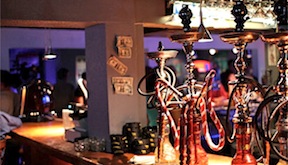
Hookah Smoke Doubles Benzene Uptake
Study suggests hookah is not a safe alternative to smoking
Hookah smokers, as well as nonsmokers exposed to hookah smoke at social events in hookah lounges, showed a significant increase in uptake of benzene, a chemical substance associated with an increased risk for leukemia, according to a study published in Cancer Epidemiology, Biomarkers & Prevention, a journal of the American Association for Cancer Research.
Some people believe that because hookah smoke is filtered through water before being inhaled, it’s somehow safer than smoking cigarettes or other forms of tobacco. But that’s simply not the case, according to Nada Kassem, associate director at the Center for Behavioral Epidemiology and Community Health at San Diego State University.
“Hookah smoking involves the use of burning charcoal that is needed to heat the hookah tobacco to generate the smoke that the smoker inhales,” Kassen said. “In addition to inhaling toxicants and carcinogens found in the hookah tobacco smoke, hookah smokers and nonsmokers who socialize with hookah smokers also inhale large quantities of charcoal combustion-generated toxic and carcinogenic emissions.”
The results indicate that smoking a hookah is no safer than other kinds of tobacco smoking — and that regulations should reflect that reality.
— SDSU NewsCenter
Viejas Casino & Resort Recertified
As ‘Responsible Gaming Facility’
Viejas Casino & Resort in Alpine announced that it has achieved re-certification as an official “Responsible Gambling Facility” by the California Council on Problem Gambling.
In 2007, Viejas Casino & Resort became the first casino in California to gain the certification and is one of three in the state to be re-certified this year. In order to gain certification by the CCPG, the resort was required to provide comprehensive training to its employees, comply with an extensive list of requirements and demonstrate the willingness and ability to help those affected by problem gambling.
“We have a proud 23-year tradition of providing a safe and entertaining environment for all of our guests,” said General Manager Chris Kelley. “On occasion, though, a very small percentage of guests are impacted by problem gambling. Viejas continues our tradition of identifying and helping those guests and we are proud of the leadership role we have assumed in this area, as a certified Responsible Gambling Facility.”
The other California casinos also earning re-certification this year are San Manuel Indian Bingo & Casino in Highland and Redwood Hotel Casino in Klamath.
Southwestern College Dedicates Solar Power System
CHULA VISTA — Southwestern College and SunPower Corp. dedicated the installation of a 3.2-megawatt solar power system on the college’s Chula Vista campus last week. The college estimates that the solar energy project — which is the largest single site of energy generation for an educational institution in San Diego Gas & Electric’s service area — will help offset the college’s energy costs by approximately $600,000 annually.
“It makes sense to use the clean, renewable resource of the sun to power our college sustainably,” said Melinda Nish, superintendent/president of Southwestern. “We think this is an investment of Proposition R dollars that will continue to pay dividends for the college community for many years to come.”
The project cost $13 million and was funded by Proposition R, the general obligation bond passed by voters in 2008.
SunPower solar panels, which generate up to 41 percent more power and have a lower degradation rate than conventional solar panels, are installed on solar shade structures in six of the college’s parking lots. Installing solar systems in parking areas takes advantage of underutilized space and provides needed shade.


